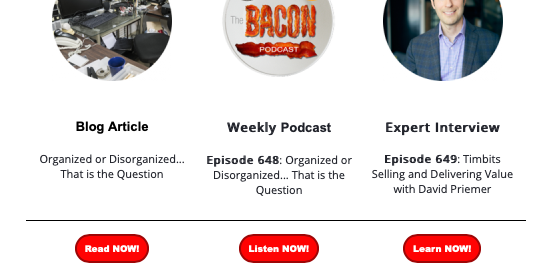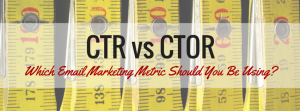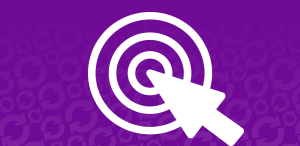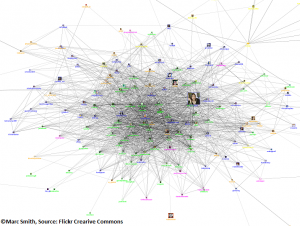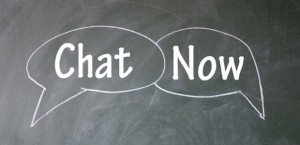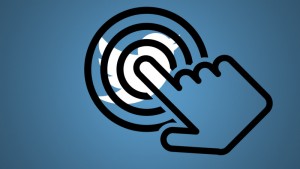A while back, I was talking about getting your email organized. There are people out there (maybe even you) who have over 8,000 emails in their inbox. But I don’t want to talk about your inbox. Today, I want to talk about your outbox, or more specifically about broadcast email in business and how to email with a purpose.
Spammy Blacklisting

If you’re using regular email, say Gmail, or your mail from your website, you have a limit, and that limit is 100 emails per day. If you exceed that limit, the domain that it’s sent from can be marked as spam. For example, I have info@b2b-im.com. I’ve got bbasilico@b2b-im.com. If I send 50 from each one of those, I hit that 100 limits. You’ve got to be careful.
Those limits are usually looking for the same email going out. So if you send one individual email, and then another individual email that’s different, that’s fine. But spamming is considered sending out the same message to a large group of people. That’s why you want to use a broadcast email service.
Broadcast Email
Now, a lot of people look for free or cheap, and frankly, you get what you pay for. There’s a lot of them out there. There’s Aweber, MailChimp, Constant Contact. MailChimp is one of the most preferred because if you have a small list, you can use it for free with the hopes that your list will grow, and you’ll start paying. But I want you to consider what is the end goal of the emails that you’re trying to send, and is it worth paying for?
This year I started using Active Campaign because of it simplicity, and its ability to perform more complex email activities like drip email campaigns. I found that the open and click-through rates have improved for both my customers and my own outgoing emails. That is what you pay for. Better opens and more interaction can lead to more or better sales.
Outcomes
Let’s start working backward. If you send out broadcast emails, what do you anticipate? Are you expecting somebody to click on a link, get back to a website, and buy something? Are you expecting them to maybe read your blog post, or listen to your podcast? Or are you just trying to inform them about a webinar, or a video, or something along those lines? What is the expectation? What is the outcome that you’re trying to achieve? Depending on that outcome, the kind of email that you use matters.
Text Vs HTML
Now, there are two different kinds of emails that you can generally send out. It’s a plain text email, which is very similar to what you’d send out in your regular email program. Then there are those fancy HTML emails, which can have headers, and buttons, and graphics, and even some video. When you send a basic text-only email, people tend to look at that more like a regular email, and they decide, should I read this? Or should I not? If you send a graphics-based email, people will peruse the images, and then decide, should I read this or not?
Common Mistakes
Some of the common mistakes that most people make when they’re trying to send out emails come in three flavors. Number one, frequency. Number two, length. And number three, purpose.
Frequency
Frequency is a question that gets asked a lot. How often should I send out an email? There are different people that send out different templates every single day. There are certain emails that you want to get every single day. I get an email every single day from Seth Godin with the tip. It’s short, and I read it.
Other people send out these long emails that are text-based. But after about the first paragraph, frankly, I doze off. Then we get to those HTML emails. Now, the ones that I send out are generally sent out once per week.
The frequency that I’ve found that works best for my customers is either once or twice a week, depending on whether they have a webinar or a special event on one day, and then information on the next. That frequency getting into people’s inbox tends to be something that is not too overwhelming. If you’re sending out an email every single day, it better be short, to the point, and actionable. But if you’re going to send it out twice a week, you still have to make it consumable.
Length
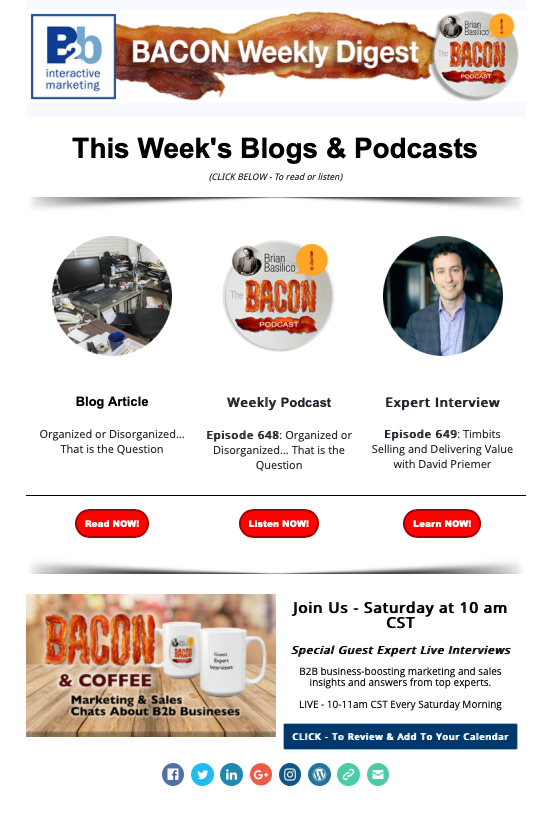
That gets us to point number two. The length of your email is very important. A lot of people like to send out what they call email newsletters. It has story one, story two, story three, story four, story five. By the time people get to story two, they’re already done. What I’m suggesting is if you’re going to send out a broadcast email, you can use the Seth Godin, very short basic text, or you can use a graphic one as well. But what I suggest you do is write one story, with one purpose, to get people to click through to one thing.
In the case of my email every single week, I have three things, but they’re all on one line. I give people the option to choose. You can listen to this podcast, listen to my guest expert interview, or read this blog post, and that’s it. And it’s all above the fold, meaning that people don’t have to scroll down to get more information. Now, I do include at the very bottom a link to a LinkedIn Live that I’m doing. If you go to baconcoach.com/live, every single week that same link takes you to a new live presentation I do every Saturday morning.
Purpose
My weekly emails, they’re consistent. It doesn’t change. There isn’t too much to read. If you make one of those super long emails, it’s going to sit in people’s inboxes, and they may unsubscribe. But those short, to the point, one thing you want them to do emails tend to get opened every single week, and fewer people unsubscribe. The last thing I want to talk about is what I started out talking about, and that is the purpose.
The purpose of my email is to let people know there’s new free content. If I can get them back to my website, they may sign up for a free giveaway. They may come and listen to a LinkedIn live, but the bottom line is I want them to get back to my website, so I can measure the effectiveness of how my email is working.
Final Thoughts
If you give people too many choices, they get confused. It goes like this. If you make them choose, they get confused. Keep it simple, drive them back to something of interest to them, and get them to take action. The main points I want to get across is number one, be consistent, and don’t over email. Number two, keep it short. And number three, have a purpose people want to click.
I would love to hear your thoughts on this. Comment below and share your thoughts, ideas, or questions about how you can email with purpose. Have you had to overcome any of the presented concepts? What worked and what did not live up to expectations? Do you have any ideas or advice you could share?
Digital & Social Articles on Business 2 Community
(29)
